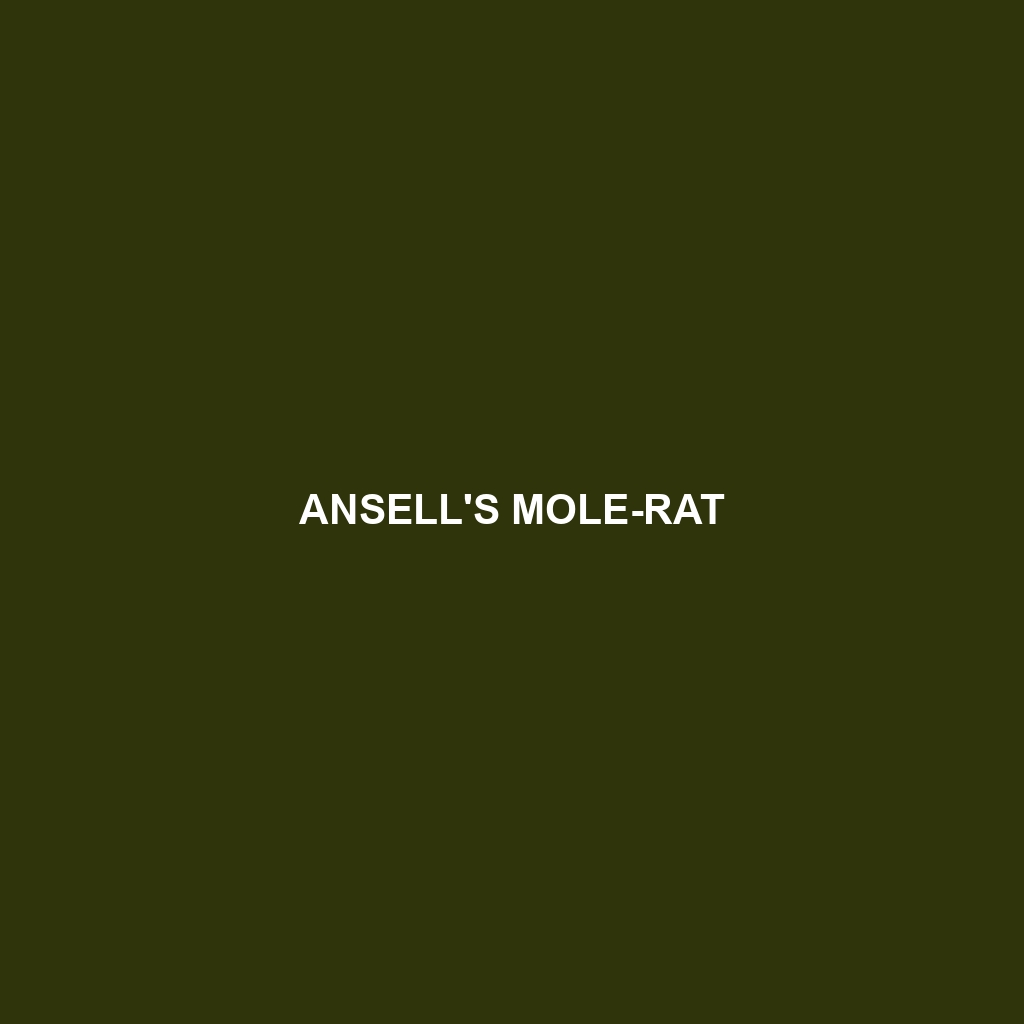Ansell’s Mole-rat: A Comprehensive Species Description
Common Name: Ansell’s Mole-rat
Scientific Name: Fukomys anselli
Habitat
Ansell’s Mole-rat is primarily found in the moist grasslands and wetlands of southern Africa, particularly in regions of Zambia and Botswana. These environments provide the necessary soil conditions for their burrowing lifestyle, allowing them to thrive in areas rich in vegetation and moisture. The species predominantly inhabits tall grass plains where they can create extensive tunnel systems.
Physical Characteristics
Ansell’s Mole-rat is a medium-sized rodent, measuring approximately 20 to 30 centimeters in length. Its body is covered with soft, dense fur that varies from a light brown to a grayish hue, providing excellent camouflage in its natural habitat. The mole-rat possesses robust limbs, short but powerful, equipped with large claws well-suited for digging. A distinctive feature of this species is its elongated snout, which aids in foraging and navigating through its tunnel networks.
Behavior
Ansell’s Mole-rat exhibits fascinating social structures, often living in colonies. These underground communities are organized and cooperative, with individuals working together to dig and maintain extensive tunnel systems. They are primarily nocturnal and spend most of their time foraging and expanding their burrows during the night, which protects them from predators. Their unique vocalizations are used for communication within the colony.
Diet
The diet of Ansell’s Mole-rat mainly consists of tubers, roots, and other underground plant materials. They are adept at using their powerful front teeth and claws to extract food from the soil. This herbivorous diet is crucial for their survival, as they require significant energy to sustain their active burrowing lifestyle. The ability to locate and consume high-energy sources like tubers is essential for their ecological niche.
Reproduction
Ansell’s Mole-rats have a relatively simple reproductive cycle, typically breeding during the rainy season when food is abundant. The female mole-rat gives birth to litters ranging from two to six pups after a gestation period of about 6 weeks. Offspring are born blind and hairless, relying on their mother for care and sustenance during the early stages of life. Parental care is vital, as adult mole-rats often remain with their young and assist in their development until they are capable of independent living.
Conservation Status
The current conservation status of Ansell’s Mole-rat is classified as **vulnerable** due to habitat loss and degradation stemming from agricultural expansion and urbanization. Conservation efforts are essential to preserve their natural habitats and ensure the survival of this unique species.
Interesting Facts
– Ansell’s Mole-rat is known for its strong social bonds and cooperative behavior, making it a fascinating subject for studies on animal behavior and social structures.
– This species plays a vital role in aerating the soil and promoting plant growth due to its extensive burrowing activities.
Role in Ecosystem
Ansell’s Mole-rat contributes significantly to its ecosystem by aerating the soil through its burrowing activities, which enhances water infiltration and promotes plant health. Furthermore, it serves as a prey species for various predators, thus helping maintain the balance within the food web. Its interactions with other organisms highlight its importance in sustaining biodiversity in grassland habitats.
